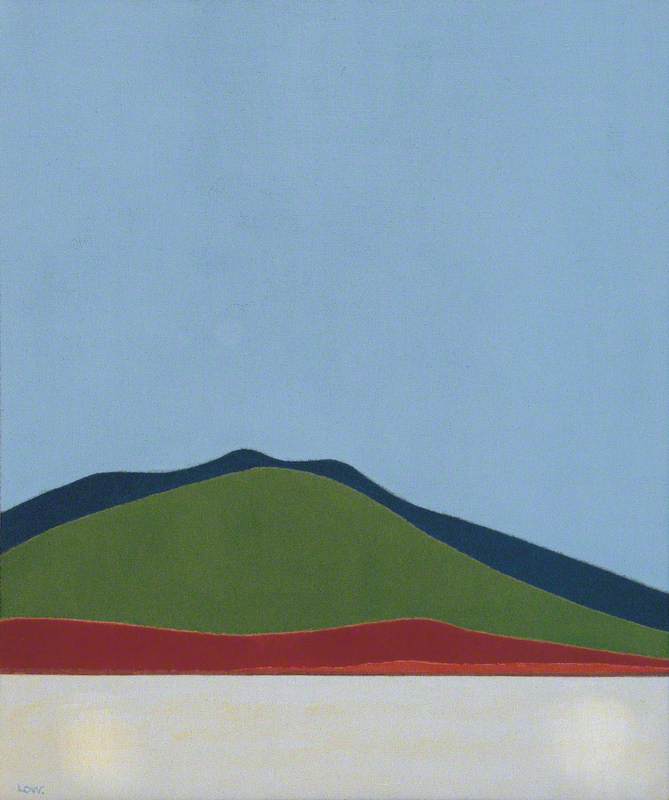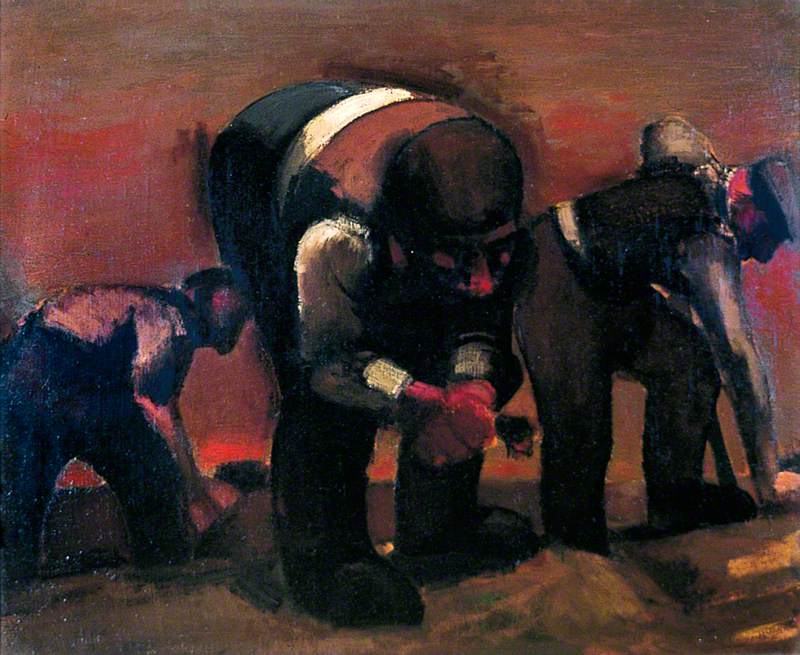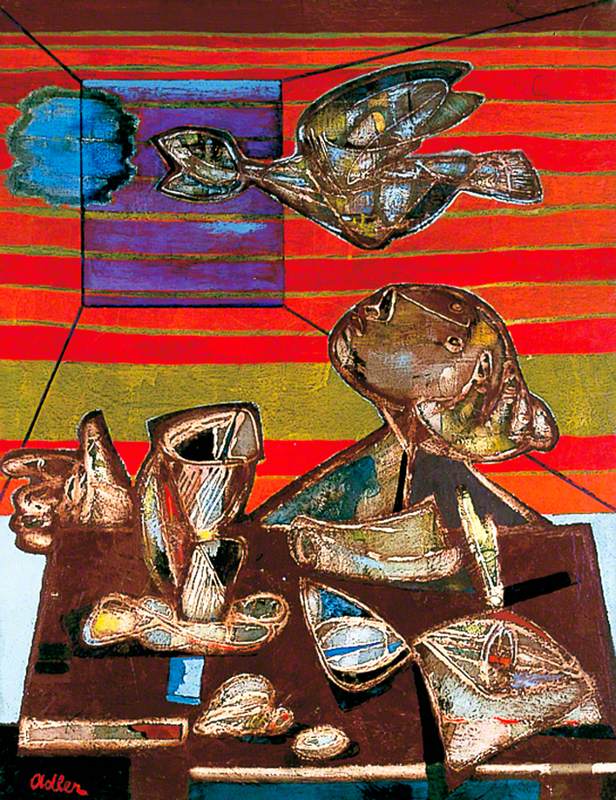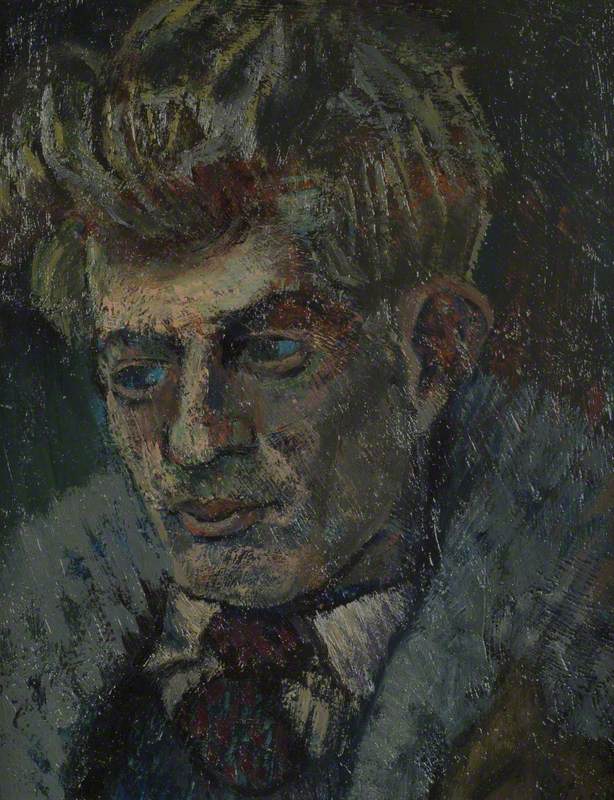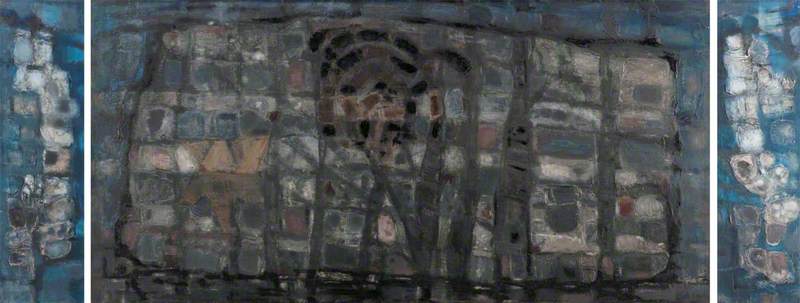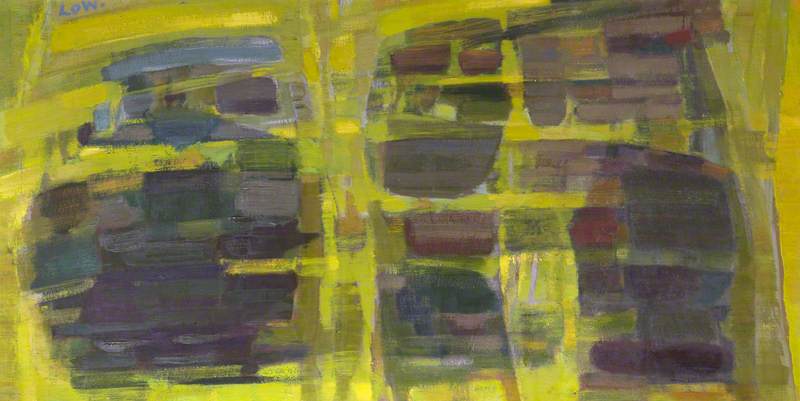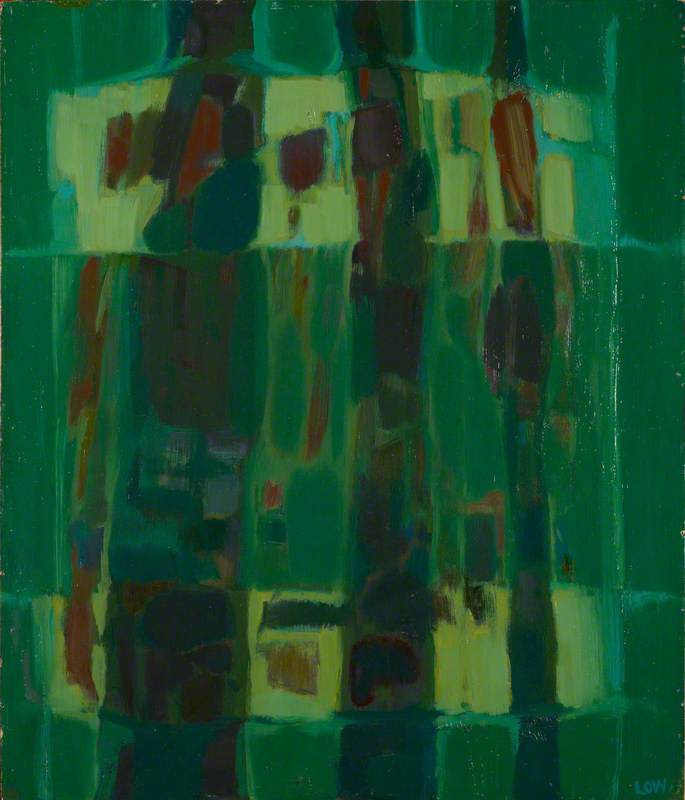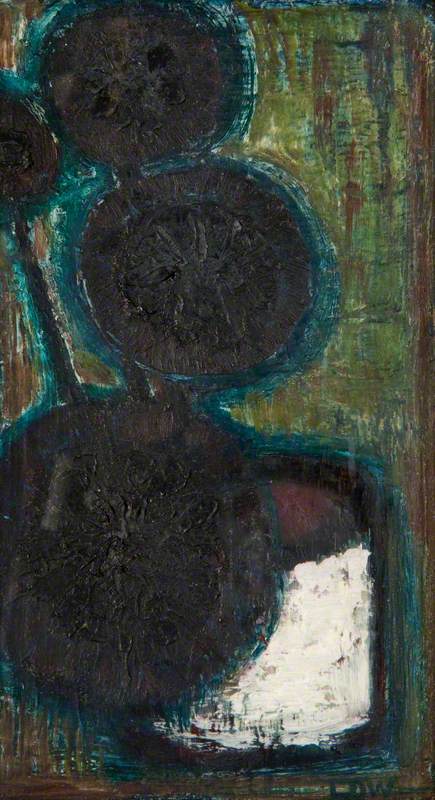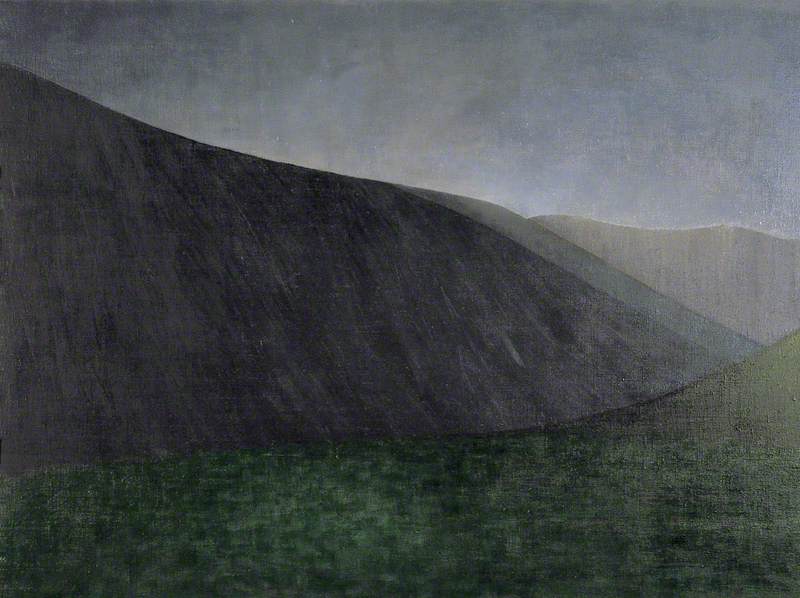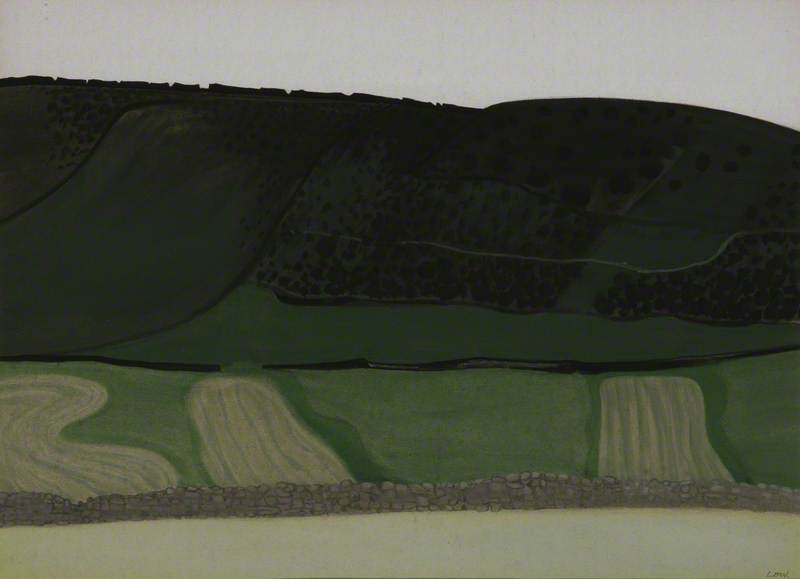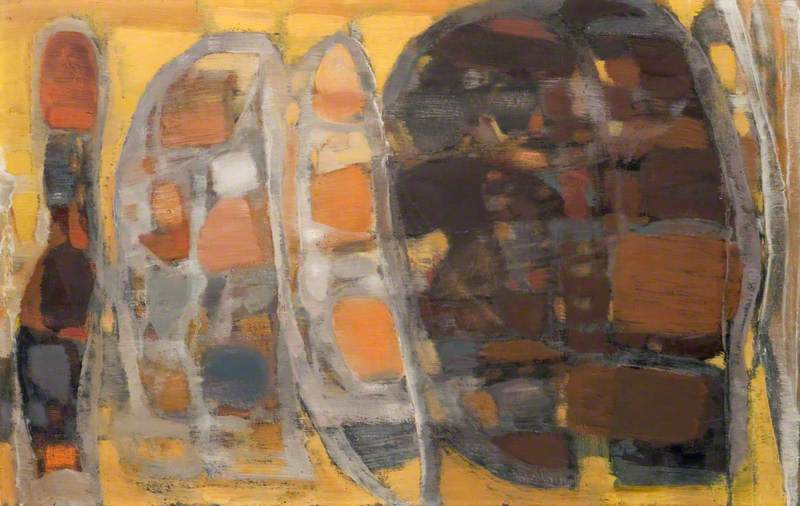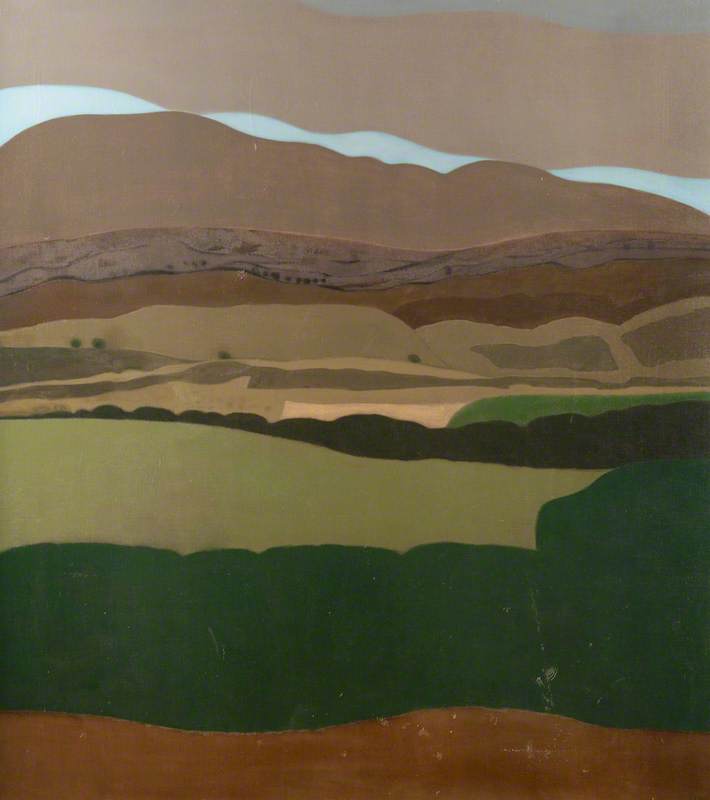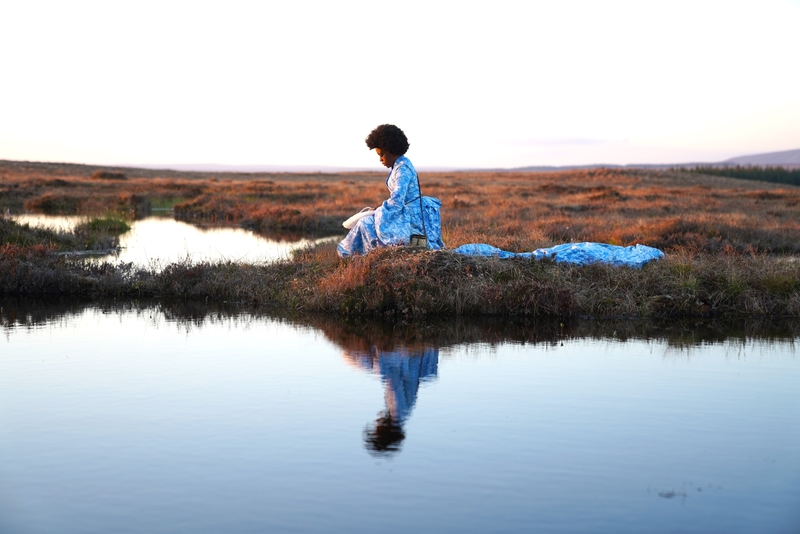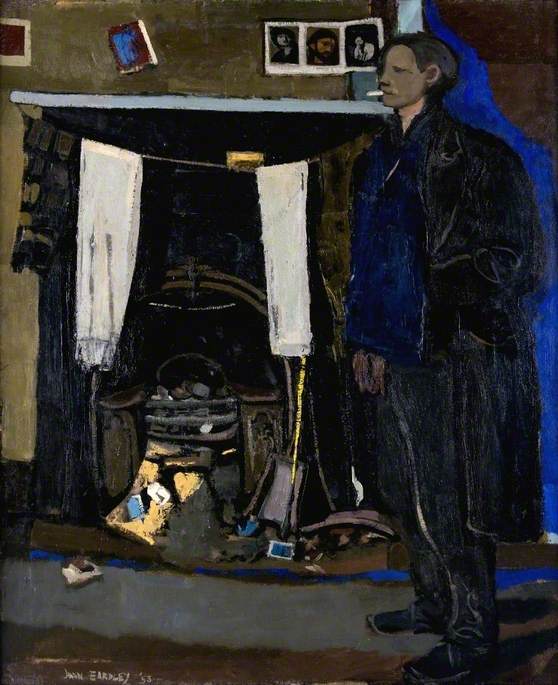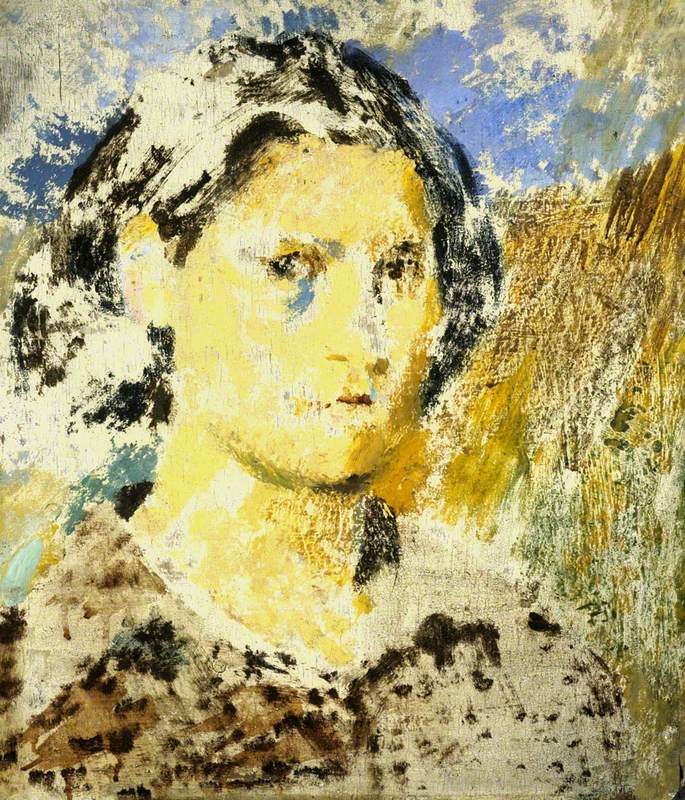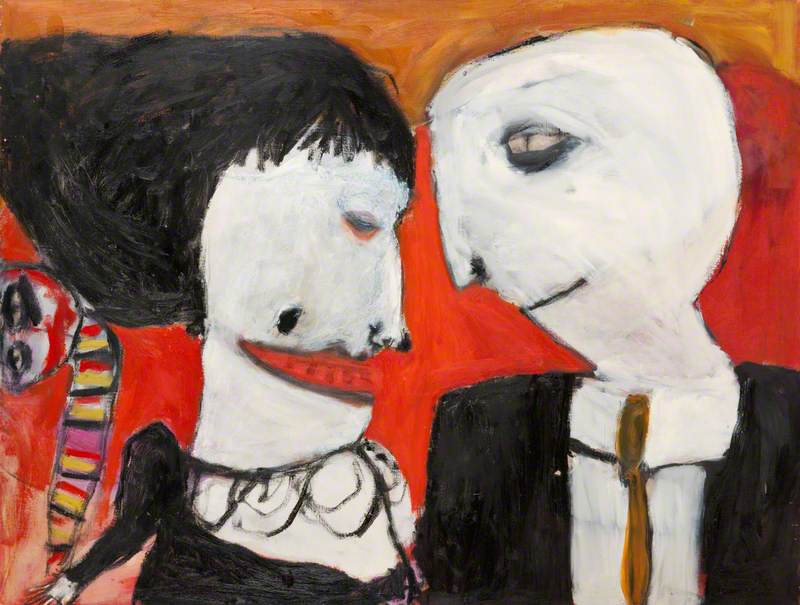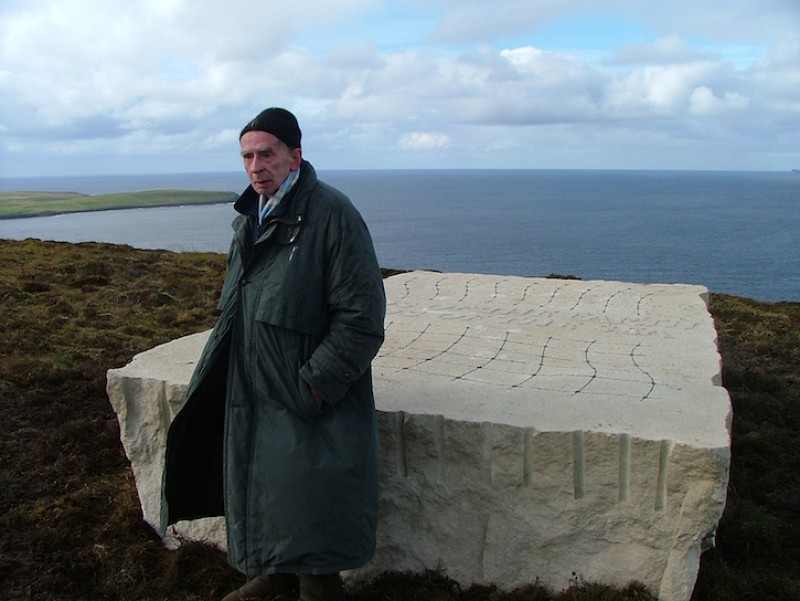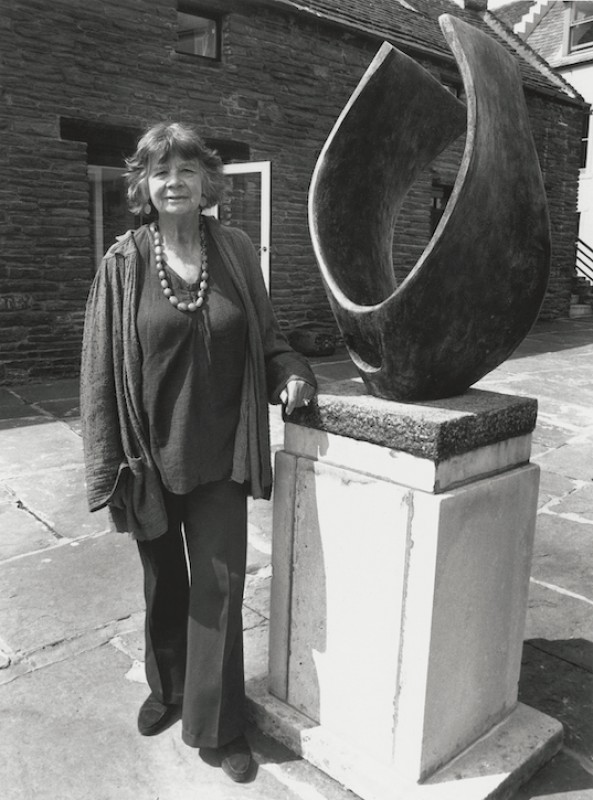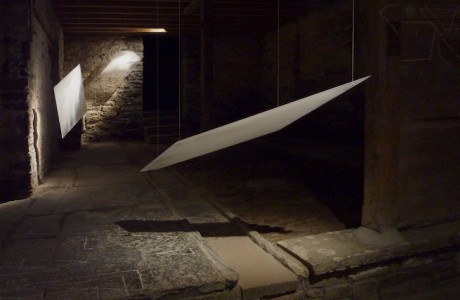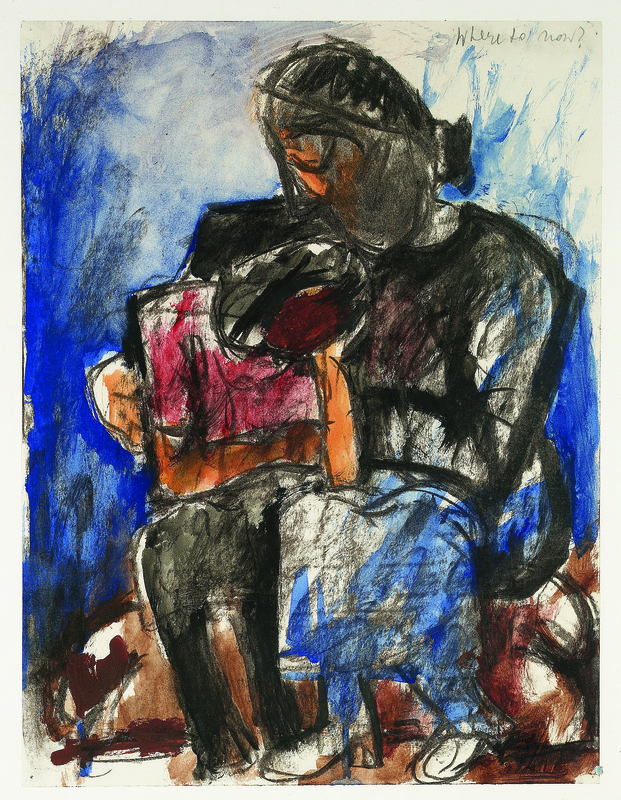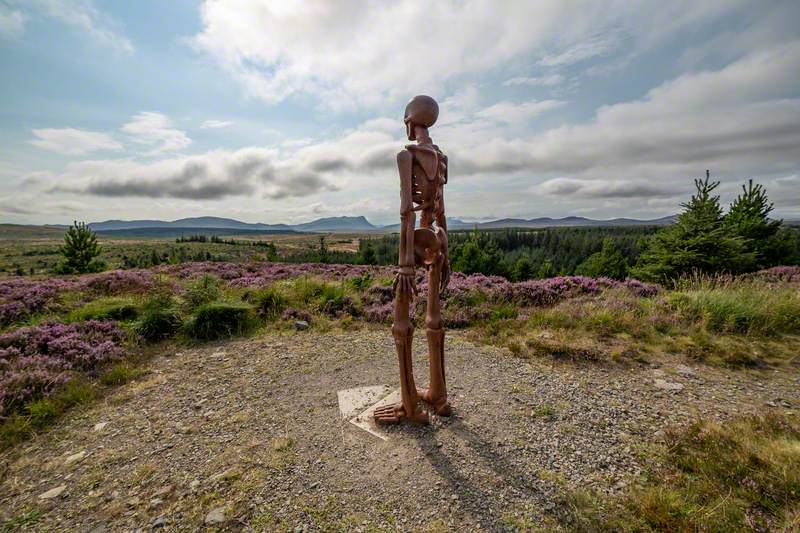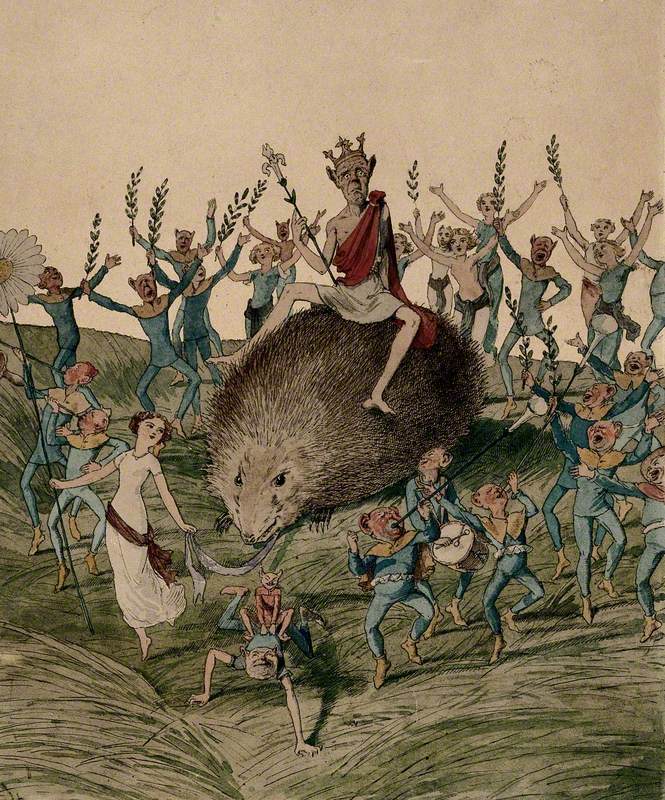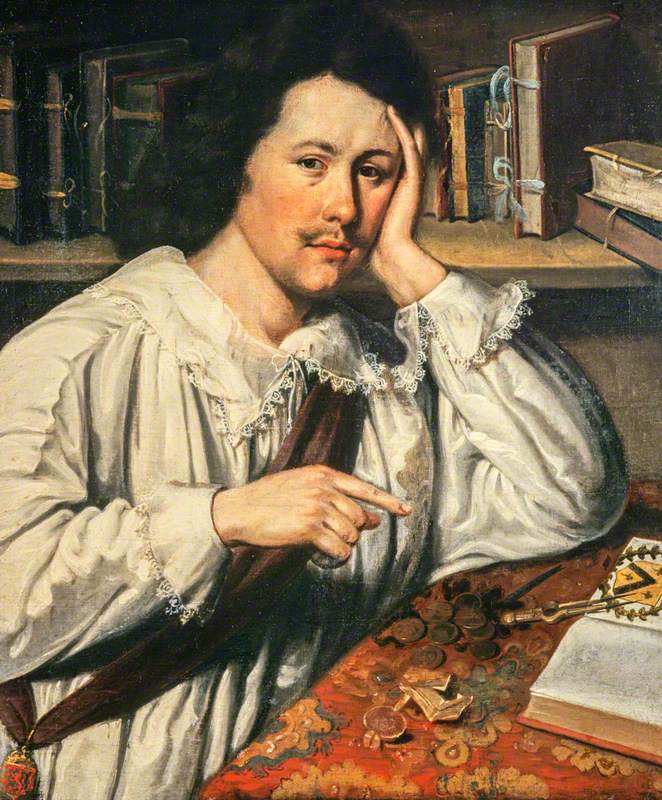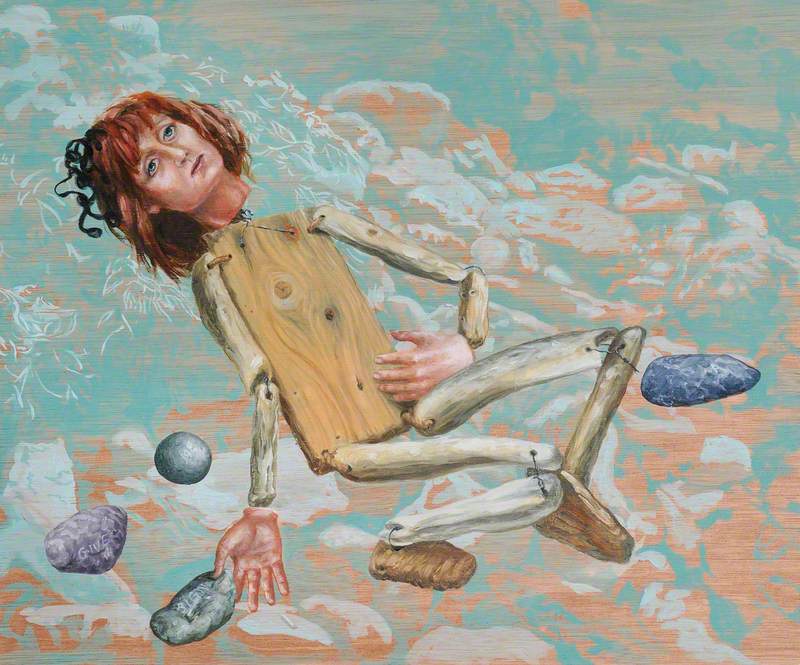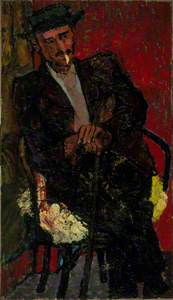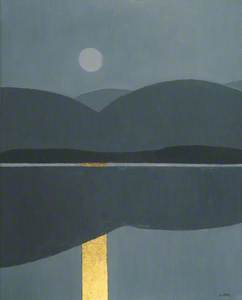Born in Gourock, a small town on the Firth of Clyde, Bet Low spent her early years exposed to both the heavy industry along the Clyde, and the sublime, expansive views of the West Highlands and the Isle of Bute across the water.
This contrast would be reflected in the different stages of her artistic career, as she progressed from gritty Expressionist-influenced scenes of urban, working-class life to poetic evocations of Scotland's Highlands and Islands.
Low studied at the Glasgow School of Art between 1942 and 1945, alongside a talented cohort of contemporaries that included Joan Eardley and Ian Hamilton Finlay, then took a short post-diploma course at Hospitalfield in Arbroath, where she studied under James Cowie.
Teacher training college followed, but Low knew immediately that this sensible career path was not for her. A chance meeting with her friend Stanley Baxter changed everything: Baxter took her to a rehearsal at Glasgow's Unity Theatre, a socialist, anti-fascist theatre group formed by and for working-class people. Feeling at home in this progressive cultural scene, Low quit her teaching course and began working as a set designer for the theatre.
When the Unity Theatre moved into the building occupied by the Refugee Centre on Sauchiehall Street, the vibrant group's cosmopolitan culture and international outlook grew. In this milieu, Low met Josef Herman and Jankel Adler, two Polish-born Jewish émigré artists who greatly influenced her early work.
Herman and Adler worked in a European expressionist style that was quite different from the conservative, traditional approach Low had encountered during her art school training. Herman was renowned for his interest in painting scenes of working-class life, rendered in thick black outlines with densely worked surfaces.
Clearly inspired by Herman and Adler, Low went out into the city and began sketching everyday scenes. Experimenting with chalk and ink to evoke the smog and soot-stained buildings that gave post-war industrial Glasgow its gloomy atmosphere, Low depicted ordinary working-class people going about their daily lives – factory workers, women beating carpets on the street, and men sleeping on benches in Phoenix Park.
During this period, Low also painted Expressionist portraits of the characters she met through her work with the Unity Theatre. Her portrait Burns Singer conveys the writer's intense, restless character with dynamic brushstrokes and thickly layered dark tones. In a portrait of socialist playwright and poet Freddy Anderson painted in the same year, Low gives a sense of his stern intellectualism through a sombre colour palette and heavy mark-making.
Her early work radically differs from the landscapes of her later style, but Low's skill at balancing darkness and light is evident in these portraits; a luminous quality emerges underneath the darker, heavier tones, bringing her sitters to life.
The arrival of the 1950s brought both a change in the city's character and a shift in Low's style. The Unity Theatre's diverse creative and intellectual circle broke up, as refugees returned to mainland Europe and others sought opportunities in London. Reflecting on this exodus in later life, Low recalled: 'For a brief period, Glasgow was cosmopolitan. It seemed to us that the city was alive. But in the bleak 1950s, it was as if nothing had happened at all.'
Breaking away from social realism, she moved towards abstraction and looked to the rural rather than urban environment for inspiration. Her oil paintings of the 1960s represent close-up studies of elemental forces. Deeply attentive to the rhythms and motions of nature, Low distils natural forms to their essence.
Merge and Emerge suggests the effect of sunlight filtering through a stream, creating a shifting pattern of silt and rocks on the bed below. In Green Place, blocks of colour thickly applied in rough, broad brushstrokes create the sense of wind rushing through a dense patch of trees. Low's verdant palette captures the teeming variation of colours and tones at play in the natural world.
During the 1950s and 1960s, Low worked tirelessly to develop Glasgow's art scene. With the support of J. D. Fergusson and Margaret Morris – whose vibrant use of colour and loose brushwork had a formative influence on Low – she helped to organise an open-air exhibition in the city's Botanic Gardens in 1956 (described in the press as 'Paris on the Kelvin').
Low was also one of the founders of the influential New Charing Cross Gallery, a much-needed arts space that provided vital support for Glasgow's emerging and established artists between 1963 and 1968.
While she remained active in Glasgow's art scene up to the end of her career, Low's deep affinity with Orkney marked the emergence of her late style. After purchasing a holiday cottage on Hoy in the late 1960s, she spent each summer there with her family. Enchanted by its wild landscape, ever-changing atmospherics and unique quality of light, she began painting scenes of the island.
In the Hoy Hills (Orkney) is a striking example of Low's responses to the islands. Low refines the scene to its essence – a simple sweep of grey hills under an expanse of darkening sky – and, in so doing, captures the quiet, sombre sense of the sublime that one feels in the presence of an expansive natural panorama. She delicately layers bright tones under a subtle gradation of grey and blue that make up the sky and hills to brilliantly evoke a shower of rain sweeping across the landscape.
Calm Water (at Mill Bay, Hoy) further heightens the Orcadian landscape's mysticism. The dazzling gold reflection of moonlight on water creates a pathway leading us into the scene; Low's simply rendered undulation of mountains in melancholic blue-grey tones evokes a curious sense of nostalgia or longing. Low's skill at transforming natural elements into a visual poetry of form is in full effect here.
Thinking about Low's process helps us understand the affective atmosphere she creates in these late paintings. Low never painted en plein air. Instead, she made preparatory sketches during her trips to Orkney and the Highlands, which then informed her painting when she returned to her Glasgow studio during the winter months.
The critic and artist Cordelia Oliver described Low's sketch work as 'a form of visual note taking'; many of her sketches were also accompanied by detailed written notes describing her experiences of colours, light and other sensory impressions. What emerges in her paintings is an image of the landscape transformed by memory and emotion, filtered through the self. Low is less interested in the immediacy of being in nature, and more concerned with how that experience expands and is coloured by mood and memory.
A deceptive simplicity belies the sense of the sublime that Low brings to her paintings of Scotland's Highlands and Islands. Through Low's paintings, we encounter the landscape anew; she encourages us to look creatively, to find the poetry of form and rhythms at play in nature.
Despite being an active and celebrated member of Glasgow's art scene for much of the twentieth century, Low is little remembered today. In her centenary year, Low deserves to take her place as one of Scotland's most significant modern landscape painters and a foremother of Glasgow's vibrant arts scene.
Lottie Whalen, writer and researcher
This content was supported by Creative Scotland

